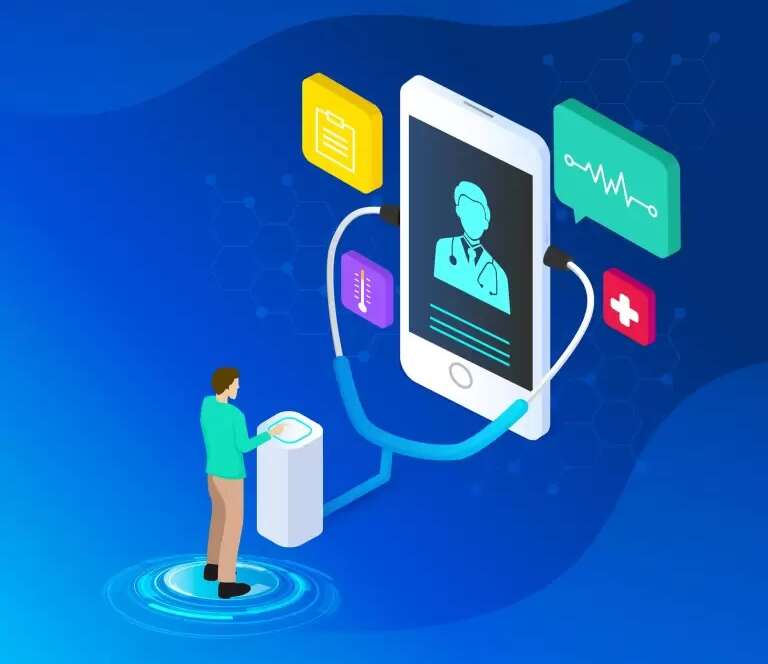A change has been noted over the past few years in the clinical trials ground, denoted by a generous alteration brought about by the rise of decentralized clinical trials (DCTs). These methodologies are inventive in nature and use technology and involve locally available healthcare providers to assist in clinical research by directly accessing patients and differs from the traditional site-centric model. In our earlier blog, we delved into the essential features of DCTs. In this subsequent post, we will delve into the myriad advantages that decentralized clinical trials (DCTs) bring, fundamentally transforming the research landscape and enhancing both patient experiences and outcomes. The implementation of virtual elements into a trial has several advantages, below ten are outlined.
- Participants with reduced loads:
- Decrease sites visits: Participants can minimize or avoid the requirement for travelling onsite by utilizing a mobile application to collect information remotely and report. During the necessity of visits, they can choose regional labs, pharmacies, or visits to the home accompanied by a nurse. This helps in the reduction of dropout rates of participants.
- Reminders and notifications: Participants are prompted to take medicines and/or execute study jobs by receiving alerts directly on their mobile phones. This helps in the improvement of compliance with the therapy.
- Multi-media training: Videos on training offer prospective participants and caregivers a clear vision and understanding of their duties, granting guidance to the point on the completion of tasks.
- Sensors and devices: The use of integrated sensors and devices frequently excludes the reporting of patient’s vital measurements and signs. This data can be made available by use of wearables.
- Enhanced adherence and sustained engagement for sponsors:
- Streamlined participant monitoring: Enhanced visibility of participants with pending tasks empowers a patient insights team to proactively assist those who may require additional support before falling out of compliance.
- Empowered and well-informed participants: DCTs can boost engagement by establishing a feedback loop that grants participants access to their individual data. This involvement fosters a sense of active participation in the trial. Furthermore, this information can be gamified to encourage participants to uphold or elevate their compliance levels compared to previous days, weeks, or fellow study participants.
- Superior precision for the creation of a stronger package of evidence:
- Enhanced quality of data: Permitting patients to report their real-time symptoms by utilization of a mobile application enhances the capture of data, whereas DCTs allows diverse integration, data of real time into an integrated electronic data capture (EDC) arrangement.
- Minimization of absent data: The possibilities of incorrect or missing entry of data in clinical trials can be reduced by adhering to reporting tools that are automated and protocols.
- Timely reporting of data: Collection of data real-time, represented by electronic (ePRO) Patient-Reported Outcomes, confirms reporting correctly near to the occurrence, stopping inaccuracies related to memory.
- Constant and repeated collection of data: Continuous capture of data is provided by wearables; thus, a comprehensive dataset is proposed for testing with outliers and averages.
- Insights in real-life: Reporting of realistic behaviors is reflected by sitting at home, thus there is a reduction in clinical settings and represents a participant’s life in a more accurate way.
- Reduction in subjectivity: The utilization of devices for the collection of data reduces the subjectivity of patients, as illustrated by apps which are patient-friendly guiding the handlers to present objective media (photos, audio, videos) that skilled raters can evaluate, mitigating risks biased in nature.
- Enhanced efficiency of delivery of trial:
- Enhanced enrollment and recruitment: The speed of recruitment through DCT is achieved two to four times sooner than conventional trials by the help of digital advertisement which are engaging and efficient online procedures, thus lowering the time of enrollment from weeks to hours and minutes.
- Accelerated collection of data: Electronic reporting by patients, facilitated by automatic reminders and notifications, thus making compliance enhancement, leading to faster completion of study.
- Swift analysis of data: Regardless of decentralization, DCTs employ the usage of cloud-based (EDC) Electronic Data Capture systems to real time manage and centralize data, thus enabling to efficiently progress to the phase of analysis for the studying teams.
- Cost minimization related to gathering of data:
- The transfer of collection of data to homes from sites impacts the study of costs positively by the elimination of costs and inefficiency of staff maintenance at vivid sites. Virtualization of support from sites lets to effectively treat patients by a sole team across multiple locations, while entry of data directly by patients helps in cost reduction related to verification of data from source.
- Researchers and patients provided with improved convenience:
- The progressions in the technology of clinical trials are allowing participation remotely leading to access transformation, attainment of a wide population through targeting digital media, and permitting DCTs, thus providing researchers with new prospects without the excessive burden of administration.
- Participants’ safety:
- Reporting real time is provided by DCTs, allowing the fast discovery of adverse events with the help of responses from patients daily and automated signals for the fast intervention of the team of study.
- Extended monitoring post-evaluation:
- The usage of tools virtually in device and drug trials can boost retention of study by smoothening burden of patients and curtailing any inconveniences related with follow-ups post-marketing.
- Better making of decisions:
- In history, the data could be accessed by the sponsors only after the completion of study and analyses of formal interim, but for the DCTs efficiency, tied with dashboards of real-time, supplies primary insights to sponsors, providing with rapid reactions to challenges and accelerated entry of market upon positive outcomes of the study.
- Countering with calamities and adaption to influences external in nature:
- DCTs have been given prominence specially after coronavirus attack,
for virtual visits and monitoring remotely by safeguarding a patient amid unanticipated challenges.
In inference, several advantages are offered by DCTs namely accessibility to participants in an upgraded way, upgraded rates of retention, gathering of data in real time, value-effectiveness, boost in quality of data, increase in enrollment, and flexibility to peripheral factors. Advancement of therapeutic knowledge is not only augmented by these benefits’ acceptance, but also therapeutic breakthroughs are accelerated, eventually altering the clinical studies ground and enhancing the experience of patients largely.


